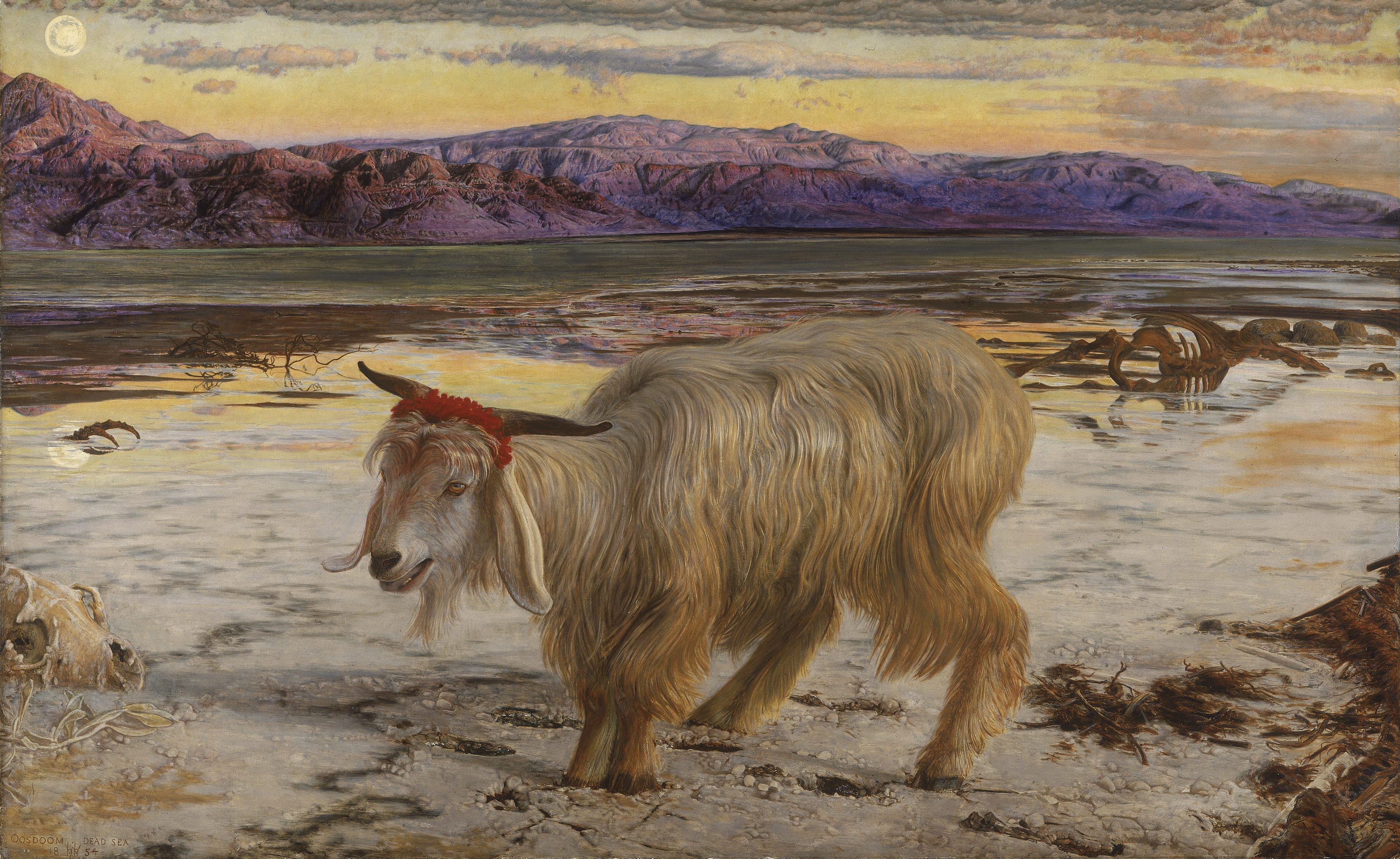Back to The Pre-Raphaelite Brotherhood.
 |
| Self-portrait, 1845. |
Humble Beginnings
William Holman Hunt was born in 1827 in London, England, as the son of a warehouse manager.
Hunt worked as a warehouse clerk before leaving to attend the Royal Academy Schools in 1844, where he met John Everett Millais, fellow founder of the Brotherhood. Together, along with Rossetti, they formed the Pre-Raphaelite Brotherhood in 1848.
The Pre-Raphaelite Brotherhood – Rienzi
Hunt’s first piece to exemplify the themes and ideals of the Brotherhood was titled Rienzi, and was exhibited at the Royal Academy in 1849. The longer title of the piece is as such: Rienzi vowing to obtain justice for the death of his young brother, slain in a skirmish between the Colonna and the Orsini factions. The letters “PRB” were included on the canvas.
The painting was based on the novel by Bulwer-Lytton. This painting sparked the interest of symbolism in art, and was generally well-received. The theme of the picture that Hunt paints is a transformation and the emergence of a savior. For Hunt, this painting symbolized how much the 19th century had lost, and just how much it had to regain.
The Scapegoat
The Scapegoat was the first major painting Hunt did while in Egypt, during his first stay in the Holy Land. The visualization of this piece came about after he studied the Talmund, which is a collection of ancient Rabinnic writings that forms the basis of religious authority in Orthodox Judaism. He had been studying to get information about Jewish rituals for the painting.
 |
| “The Scapegoat” |
It’s easy to perceive this painting as another religious painting by Hunt, but there is greater meaning that lies beneath the surface – or beneath the paint. In the Gospel According to Matthew, those goats who stay on the path provided for them are accepted into heaven. Those who do not, however, are turned away on Judgement Day. The goat also represents sacrifice. So, rejection and sacrifice, to which does this painting apply? Well, for the Brotherhood, strict, binding symbolism is usual for their paintings. But The Scapegoat reveals a knowledge of religious symbolism, especially the red atop the goat’s head, which is thought to symbolize Christ’s crown of thorns, further proving the idea of a sacrificial image.
The Awakening Conscience
A modern-day interpretation of Hunt’s painting by Dr. Beth Harris and Dr. Steven Zucker, both from the Khan Academy Art Project.
Later Works and Death
 |
| Self-portrait, 1867. |
Of his later paintings, the most important were The Triumph of the Innocents and May Morning on Magdalen Tower. He thankfully finished both of these before he lost he eventually began to lose his sight.
As evidenced in such paintings as The Light of the World and The Shadow of Death, Hunt was dedicated to preserving the Pre-Raphaelite ideals and themes, especially his favor of the religious subject matters. In 1905, Hunt was bestowed the Order of Merit by King Edward VII. The Order of Merit is given to individuals who have garnered great success and achievement in arts, learning, literature, and science. He also published his autobiography in 1905.
Throughout his life, Hunt never achieved the fame and celebrity that other artists had, and that he wanted. He became known as a religious painter and a leader of Victorian paintings, and made a decent living off of that. In his earlier years he received a lot of criticism of his work and even seriously considered moving abroad to escape it, but he stuck it out and continued to paint in the style he liked.
William Holman Hunt died in 1910.
Sources
Glover, Michael. “The Scapegoat, By William Holman Hunt.” The Independent. Independent Digital News and Media, 29 Sept. 2012.
Landow, George P. “Rienzi.” A Victorian Web Book. 8 Dec. 2004. http://www.victorianweb.org/painting/whh/replete/rienzi.html
Ripley, Paul. “Art Renewal Center Museum Artist Information for William Holman Hunt.” Art Renewal Center Museum Artist Information for William Holman Hunt.
“‘The Scapegoat’, William Holman Hunt.” Liverpool Museums. http://www.liverpoolmuseums.org.uk/online/pre-raphaelites/scapegoat/
“William Holman Hunt 1827–1910.” William Holman Hunt. http://www.tate.org.uk/art/artists/william-holman-hunt-287
“William Holman Hunt 1827–1910.” ArtMagick. http://www.artmagick.com/pictures/artist.aspx?artist=william-holman-hunt
“William Holman Hunt (British Painter).” Encyclopedia Britannica Online. Encyclopedia Britannica
Self Portrait, 1845 – Wikipaintings – used under appliance of public domain artwork. http://www.wikipaintings.org/en/william-holman-hunt/self-portrait#close
The Scapegoat – Wikimedia – used under appliance of public domain work – https://sites.udel.edu/britlitwiki/files//2018/06/FileWilliam_Holman_Hunt_-_The_Scapegoat.jpg
The Awakening Conscience – Khan Academy – released under creative commons – http://smarthistory.khanacademy.org/hunt-the-awakening-conscience.html
Self-portrait, 1867 – Wikimedia – used under appliance of public domain work – https://sites.udel.edu/britlitwiki/files//2018/06/FileWilliam_Holman_Hunt_-_Selfportrait.jpg
Contributor: Saienni
